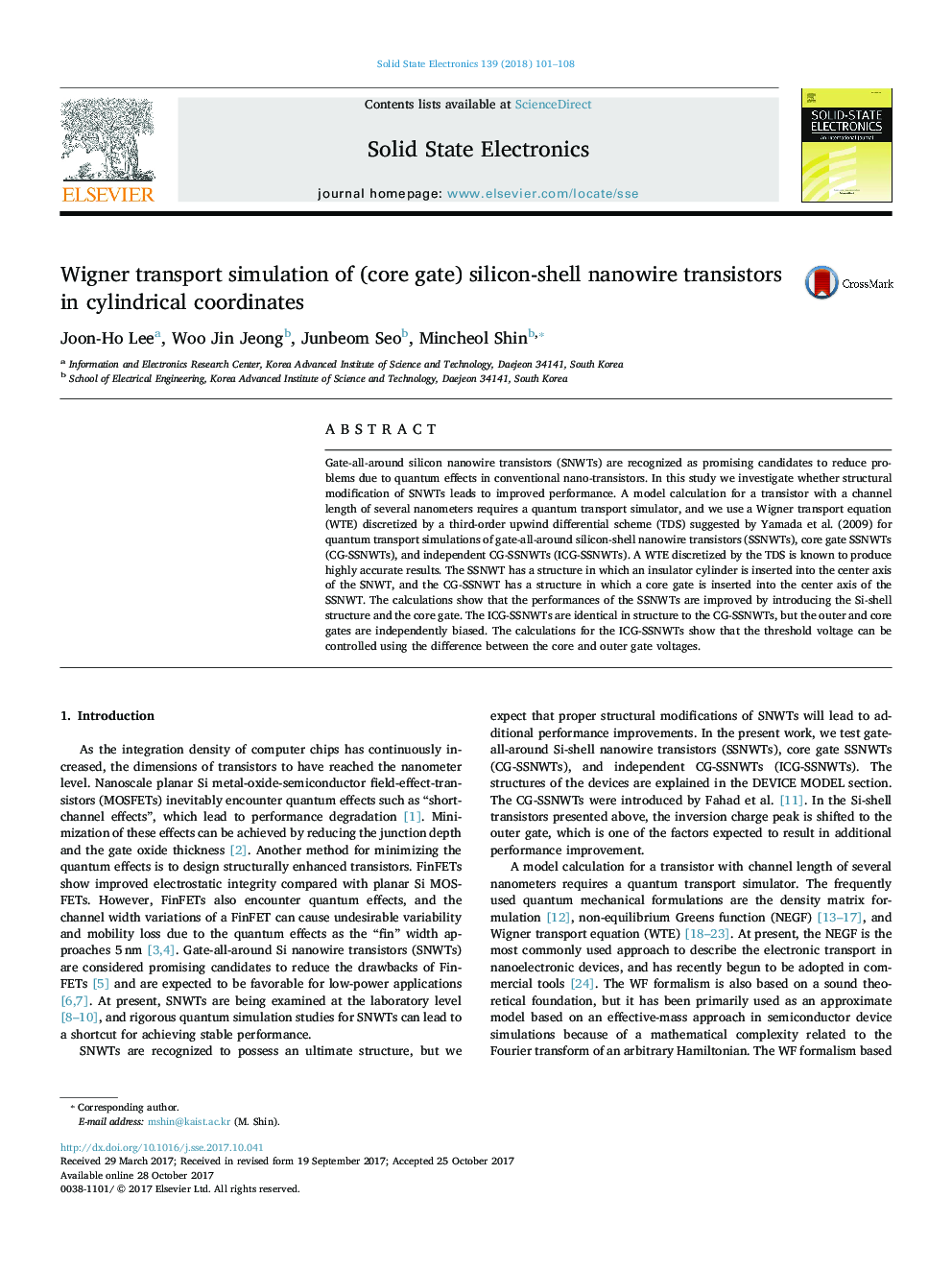| Article ID | Journal | Published Year | Pages | File Type |
|---|---|---|---|---|
| 7150648 | Solid-State Electronics | 2018 | 8 Pages |
Abstract
Gate-all-around silicon nanowire transistors (SNWTs) are recognized as promising candidates to reduce problems due to quantum effects in conventional nano-transistors. In this study we investigate whether structural modification of SNWTs leads to improved performance. A model calculation for a transistor with a channel length of several nanometers requires a quantum transport simulator, and we use a Wigner transport equation (WTE) discretized by a third-order upwind differential scheme (TDS) suggested by Yamada et al. (2009) for quantum transport simulations of gate-all-around silicon-shell nanowire transistors (SSNWTs), core gate SSNWTs (CG-SSNWTs), and independent CG-SSNWTs (ICG-SSNWTs). A WTE discretized by the TDS is known to produce highly accurate results. The SSNWT has a structure in which an insulator cylinder is inserted into the center axis of the SNWT, and the CG-SSNWT has a structure in which a core gate is inserted into the center axis of the SSNWT. The calculations show that the performances of the SSNWTs are improved by introducing the Si-shell structure and the core gate. The ICG-SSNWTs are identical in structure to the CG-SSNWTs, but the outer and core gates are independently biased. The calculations for the ICG-SSNWTs show that the threshold voltage can be controlled using the difference between the core and outer gate voltages.
Related Topics
Physical Sciences and Engineering
Engineering
Electrical and Electronic Engineering
Authors
Joon-Ho Lee, Woo Jin Jeong, Junbeom Seo, Mincheol Shin,
